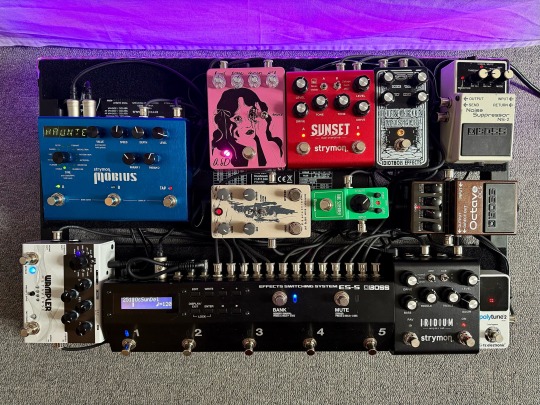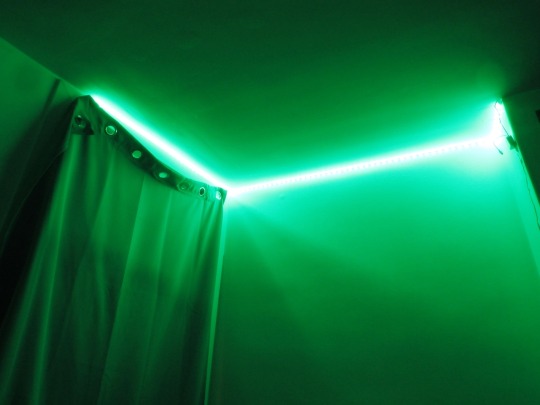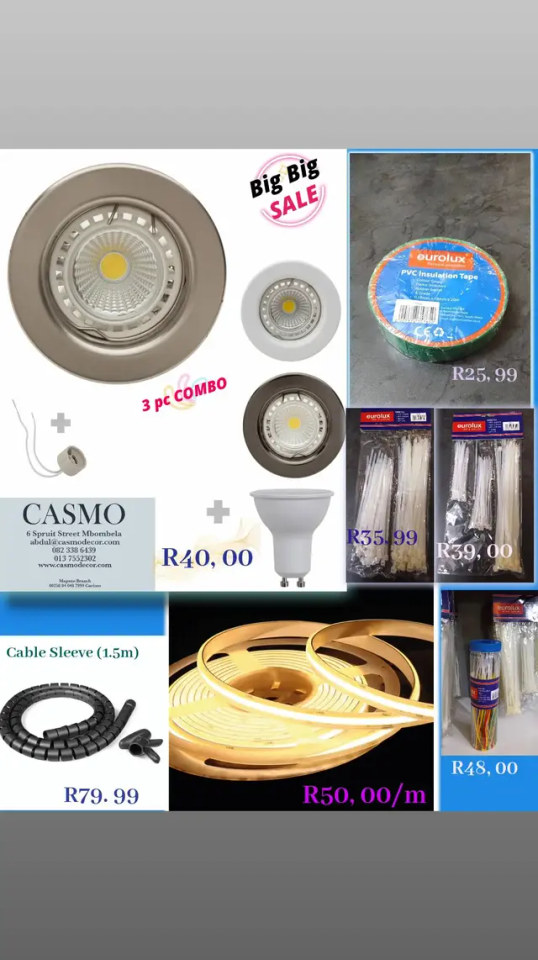#LED strip lights
Explore tagged Tumblr posts
Text

New album, new pedalboard.
#power works now to test and save some settings on this lil monster#pedalboard#guitar#guitar effects#bass guitar#electric guitar#fender#strymon#boss#wampler#asd#Enron Valdez#pink#purple#dungeon master#fuzz#octave#tc electronics#old blood noise#obne#procession#reverb#delay#spaceship#Ibanez#tube screamer#mobius#iridium#sunset#led strip lights
17 notes
·
View notes
Text

Finally done, at least the first pass of, writing cues for the show.
#romeo and juliet#shakespeare#cyberpunk#play#community theatre#directing#script#cues#lighting#led strip lights
2 notes
·
View notes
Text


nice art with the perfect leds😍🚘
2 notes
·
View notes
Text


The ceiling
9 notes
·
View notes
Text
4 notes
·
View notes
Text
How Can Ambient Shower Lighting Improve Your Overall Bathroom Atmosphere?

The atmosphere of a bathroom is significantly influenced by its lighting. Ambient shower lighting can turn a regular bathroom into a peaceful retreat, perfect for starting your day off right or relaxing at the end of it. The soft light from well-placed fixtures creates a warm and inviting space, making your daily routine feel more like a spa visit. By reducing harsh shadows and spreading light evenly, ambient lighting improves the bathroom's look while helping you unwind. Whether you need bright light to energize you in the morning or a calm glow for a soothing evening bath, the proper lighting creates the perfect atmosphere. This article will explore how incorporating ambient lighting within your shower area can significantly enhance the overall ambiance, providing both functionality and aesthetic appeal.
Transformative Effects of Shower Lighting
Ambient lighting goes beyond just being functional in the bathroom; it completely changes the atmosphere. This softer type of lighting reduces harsh shadows and fills the room with a warm glow, making your daily routines feel more pleasant. Whether you're getting ready for a hectic day or winding down at night, the gentle light from shower lighting creates a luxurious, spa-like feel, transforming regular showers into enjoyable experiences.
The Role of Smart Light Bulbs in Customization
Utilizing smart light bulbs in your shower area enables customization of the environment to suit various moods or times of day. These bulbs can be adjusted for brightness and color temperature, making them far more versatile than traditional lighting options. Whether you choose a soft, warm light for a relaxing evening shower or a bright, energizing light in the morning, smart bulbs can change to match what you want. This helps make your bathroom more useful and enjoyable.
Focus on Shower Nook Lighting
Specific lighting for targeted areas, like the shower nook lighting, enhances the shower's functionality by illuminating essential spots, such as shelves and corners. This makes it easier to reach your shampoos and soaps while also showing off the design features of your bathroom, adding elegance and style to the overall look. With these smart details, your bathroom becomes both a beautiful and practical space that improves your daily routine.
Complementing with Security Lights
Adding security lights outside the bathroom can create a complete lighting plan that balances a pleasant atmosphere inside with safety outside. While the soft lighting inside makes the bathroom feel calm, strong security lights outside help keep you safe and give you peace of mind. This combination lets you enjoy your bathroom without worrying about what's going on outside. When the areas around your home are well-lit, you’ll feel safer and more at ease during your daily activities.
Overview
Overall, ambient shower light offers more than mere visibility; it creates an inviting atmosphere that enhances everyday bathroom routines. Through innovative lighting solutions, your bathroom can achieve a balance of beauty, functionality, and efficiency. These energy-efficient lighting options not only cater to aesthetic preferences but also contribute to a practical and modern home environment. If you also want to revive your bathroom with this lighting, then you can rely on businesses like LED City. Their experienced team continuously works on unique and innovative lighting designs at affordable
0 notes
Text
Creative Projection Mapping Lighting Solutions - Artistic Lighting
Enhance your space with projection mapping from Artistic Lighting. Create breathtaking visuals and immersive experiences with our innovative lighting solutions designed to captivate.
0 notes
Text
RGB Background Light #MeRGBW #GamingSetup
MeRGBW RGB Smart Neon Lights bring you a different visual enjoyment!🌟 MeRGBW App control makes your lighting smarter and more distinctive.
🍀Follow +♻️+❤️+Comment ✨THANKS FOR WATCHING🎬
#MeRGBW#gaming setup#MeRGBW Smart Lights#Gaming lights#desk setup#Neon Rope Lights#LED Strip Lights#RGB#Final Fantasy#final fantasy series#TV Background Lights#rgb setup
0 notes
Text

Current Sales on electrical accessories @ CASMO DECOR
Contact : 013 755 2302
013 752 6011
082 338 6439
0 notes
Text
Programming LEDs
So, progress. I now have 2 LED runs (multiple strips in serial) working on the board, with presets created. I also have the framework for how I'm going to build the cue list. I have a playlists.json file with an object with named playlists. Currently I have been able to test with
jq '.FriarCSMtoLSM' playlists.json |xargs -0 curl 'http://192.168.86.28/json' -H 'Content-Type: application/json' --data
Where "FriarCRMtoLSM" is a named playlist that combines the presets to create the effect. It gets POSTed to the board and it runs!
For the cue list, I will have an array of the named playlists in order. When a cue is called it will look up the named playlist and send it.
I have 2 more runs to add, and a bunch more presets, and playlists to create, but I am now confident about the software. (There is a fugly workaround that I will have to use to get all of the chasers running at the same speed, involving "virtual" leds and a big array , but I've tested that on one strip, so it will work with the others)
The big scary bit for me will be moving from desktop work to the real installation with the longer runs to the first LED.
#romeo and juliet#shakespeare#cyberpunk#play#community theatre#directing#led strip lights#ledstrip#wled#set design#software over hardware any day
0 notes
Video
youtube
One LED driver can easily drive multiple light strip
0 notes
Text
0 notes
Text
How Can Aluminum LED Channels Improve the Efficiency of Your LED Lighting?

Lighting technology has come a long way, moving from old incandescent bulbs to more efficient and long-lasting LED lights. Both businesses and homeowners are now choosing these bulbs because they save energy and perform better. But to get the most out of your LED lights, it’s not just about picking the right bulbs. Aluminum LED channels are essential, too. These channels help spread the light evenly, protect the light from dust and moisture, and keep it cool by managing heat. This not only makes these lights last longer but also makes installation and maintenance easier, saving you time and money. This article will explain how these LED channels can improve your LED lighting and how they help spread light more evenly, making your lighting last longer.
Optimizing Light Distribution
One of the primary advantages of using aluminum LED channels is their ability to optimize light distribution. These channels protect the LEDs and spread light more evenly, which helps to reduce glare and make the lighting look better. This is particularly important in commercial spaces where good lighting is needed for both practical use and comfort. By improving how light is distributed, businesses can make sure their areas are well-lit, which can boost productivity and make customers happier.
Enhancing Durability
Aluminum is known for being strong and resistant to rust and damage. When LED strips are covered in aluminum channels, they are protected from
dust,
moisture,
and physical impact.
This protection is vital in harsher environments or in areas where lights need to withstand regular cleaning. By safeguarding the LEDs, aluminum channels extend the lifespan of the lighting system, which is particularly beneficial for commercial LED lighting applications that require consistent and reliable brightness.
Improving Heat Reduction
LEDs generate heat, and managing this heat is key to maintaining their efficiency and lifespan. Aluminum LED channels assist in reducing heat more effectively. The metal acts as a heat sink, pulling heat away from the LED bulbs and dispersing it more evenly. This cooling effect helps prevent overheating, thereby maintaining the efficiency of the LEDs and preventing premature failure. This feature is crucial in high-power applications such as 480v lighting, where managing thermal output is essential for safety and efficiency.
Streamlining Installation and Maintenance
Another significant benefit of aluminum LED channels is their contribution to easier installation and maintenance. These channels often come with all necessary mounting hardware and can be easily integrated into various architectural styles. For businesses, this means quicker setup times and lower labor costs. Maintenance also becomes simpler, as the channels provide straightforward access to the LEDs for cleaning and replacements, ensuring minimal downtime and disruption. This easy access helps avoid extended outages and keeps your lighting system working well.
Final remarks
Incorporating aluminum LED channels into your commercial lighting setup is not just about aesthetics; it’s about enhancing efficiency, durability, and performance, especially in demanding commercial environments. Whether you are upgrading your office, retail space, or production area, consider how these channels can improve the effectiveness of your lighting solutions. Those searching for high-quality LED products can look at the products offered by businesses such as LED City. They boost your lighting efficiency with solutions that shine brighter and last longer. With better light spread and heat management, you’ll get more reliable and consistent lighting. Also, they help you cut maintenance and energy costs.
0 notes
